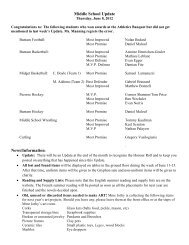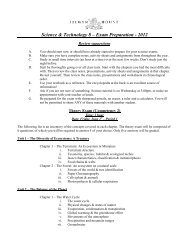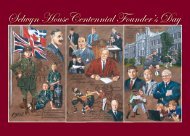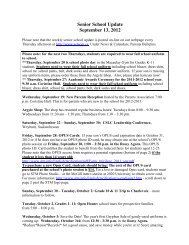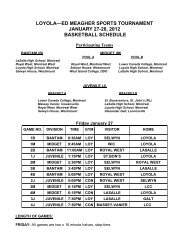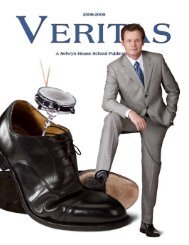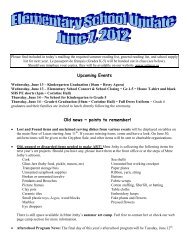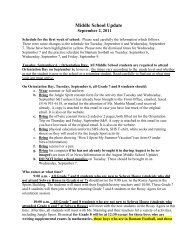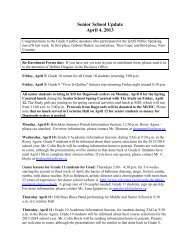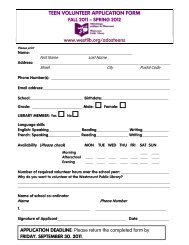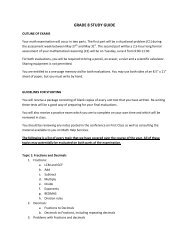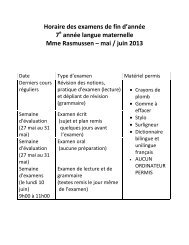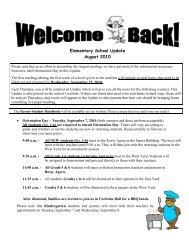Senior English Critical Writing Handbook - Selwyn House School
Senior English Critical Writing Handbook - Selwyn House School
Senior English Critical Writing Handbook - Selwyn House School
Create successful ePaper yourself
Turn your PDF publications into a flip-book with our unique Google optimized e-Paper software.
(c) Foreshadowing. A foreshadowing is a momentary hint of an event (usually dire) towardswhich the action is building. In this sense, it is the opposite of a flashback, although it coversvery much less space than does a flashback.(d) Inverse Causal Order. Events narrated in inverse causal order place the effect of a givenaction before its cause. Such an order is frequent in murder mysteries, for example, which oftenbegin with the discovery of a dead body and only gradually reveal what has led up to the murder,leaving last of all, the revelation of the murderer’s identity.(e) The Frame Story. This term is an analogy to painting: it compares the shape of a particularkind of narrative form to the look of a painting in its frame. The main plot corresponds to thepicture; a minor sub-plot involving the narrator as a participant corresponds to the frame aroundthe picture. The sub-plot breaks into two parts, one of which appears as an introduction to themain plot, and the other of which appears as a coda or tail-piece to the main plot. WutheringHeights, for example, begins with the visit of a Mr. Lockwood to a remote area in the <strong>English</strong>heath country. The main plot is a story he learns there. When he finishes telling that story, he reappearsas the visitor once again, having given the main story to us as an omniscient andpurportedly anonymous narrator.(f) Episodic Structure. Fiction following episodic structure gives us a weak main plot (sometimesreduced to the level of a frame story) in chronological order, but interrupted by a series of selfsufficientshort stories or episodes. Cannery Row, for example, is a collection of stories, each ofwhich characterizes one of the natives of the town of Cannery Row; the stories hold looselytogether by a main plot that involves the celebration of an unsuccessful party followed later bythe celebration of a successful party meant as compensation for the first. The Bridge of San-LuisRey gives us five episodes, composite biographies of key people living in Lima during theseventeenth century. All that holds these episodes together, apart from an insignificant sharing ofcharacters and settings, is the common coincidence that the people whose biographies form themeat of the book meet their deaths when a bridge falls.(g) Cyclical Order. In a book employing cyclical order, the ending meets the beginning in such away that the events might happen all over again, endlessly tracing a circle.UnityIn the first sentence of this section, enumerate in climactic order the major devices throughwhich the author of the book in question has unified his plot, that is, made it a single thing. Thendeal with the first of these in the remainder of your first paragraph, and with the rest of them insubsequent, separate paragraphs.If the work of fiction be good, its author may use many of the following devices:(a) dramatic preparation or foreshadowing;(b) plot devices (physical items, coincidences, confrontations, recognitions, supernaturalappearances, dei ex machina, plays-within-plays) that connect different plot lines ordifferent parts of the same plot line;(c) parallel ideas (themes), characters, or situations(d) restriction of setting in time and place;26



